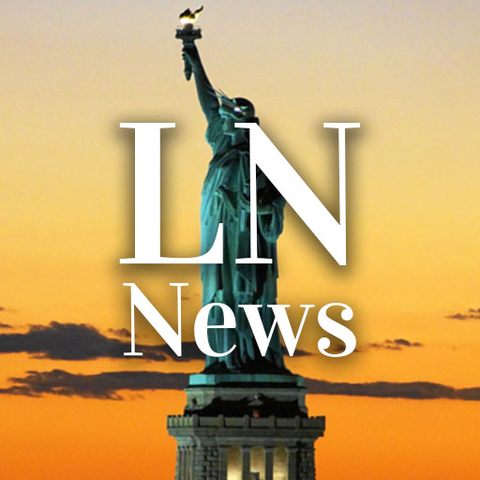



President Donald Trump and his administration are attempting to accomplish what former President Richard Nixon sought to do in his second term: Overhaul the US government. From the State Department to the Department of Defense, the White House is conducting a regime change of ideas and personnel across the corridors of power. The next institution that is in the Oval Office’s line of vision is the Federal Reserve System.
Who knew the Federal Reserve would be one of the hottest topics of the year?
Treasury Secretary Scott Bessent, in an interview with CNBC’s “Squawk Box” on July 21, thinks it is time to examine the entire central bank. While the recent focus has been on Fed Chair Jerome Powell and the years-long $2.5 billion headquarters renovation, numerous high-profile individuals propose reviewing every aspect of the institution, including its policy operations and personnel.
The Cabinet secretary, who has been the glue holding Trumponomics 2.0 together, is not the only person proposing massive change to the Eccles Building.
National Economic Council Director Kevin Hassett, considered a potential contender to replace Powell next year, indicated in an interview earlier this month that Trump aims to downsize the Fed amid its abysmally poor performance in recent years.
“I’m sure that whatever leadership the president chooses for the new Federal Reserve that they are going to pay close attention to the runaway spending, to the actual losses after years and years of profits,” Hassett told Fox Business Network host Larry Kudlow.
Former Fed Governor Kevin Warsh believes the entire system needs a top-down change. Warsh, who has participated in a business media circuit over the last few months and is viewed as Powell’s likely successor, has eloquently outlined the problems facing the US central bank.
First, the institution has continually shifted the inflation goalposts to guide monetary policy. Second, the system depends on economic models from the 1970s that may no longer be relevant. Third, Powell and his colleagues are sending conflicting messages on interest rates: a super-sized half-point rate cut in September and no reductions to the federal funds rate since December despite comparable inflation data.
“We need regime change in the conduct of policy,” Warsh said in a July 17 interview with CNBC’s “Squawk Box.” “The credibility deficit lies with the incumbents that are at the Fed.”
While abolition is 99.9% unlikely to occur, is what the Trump administration doing the second-best option? It depends on what the new occupants at the Eccles Building plan to do after Powell.
Here is a summary of the Fed’s work since the coronavirus pandemic: kept interest rates at 0% for too long, paid foreign banks interest, asserted that post-crisis inflation was transitory, lost approximately $200 billion over two years for the first time, and pulled the trigger on rate cuts two months before the presidential election. If a corporation were to put together such a five-year record, the board of directors would likely fire the CEO.
Of course, on a longer-term scale, the Federal Reserve System has eroded Americans’ purchasing power, created several bubbles that devastated the economy, and facilitated out-of-control spending in Washington. Not to mention the century-old history of the Fed playing politics, despite the Banking Act of 1935 explicitly designed to bolster central bank independence.
Liberty Nation depends on the support of our readers. Donate now!
Indeed, professors, pundits, and politicians are feigning outrage over Fed independence, proclaiming that the president is attempting to eradicate this feature. Questioning monetary policy is now perceived as an insurrectionist act, but only if one side of the political aisle does it (the reader can guess which party!).
But while Jerome Powell has been the centerpiece in anti-Fed sentiment in the current administration, it is every nook and cranny inside the Eccles Building that is now the focus for the likes of Trump, Bessent, and Hasset – and potentially Warsh if he is chosen as Powell’s successor. If they are taking a magnifying glass inside the Federal Reserve, they will generally find several things, mainly that the models staff economists monitor ignore the money supply’s impact on inflation, how interest rates are transmitted, and whether tariffs are inflationary in today’s global economy.
The US central bank is engaged in its five-year monetary policy review. However, this does not home in on tools, models, and data gathering but rather how it communicates policy. If the world’s most powerful institution wanted to conduct a thorough and honest assessment, leaders would champion a platform like Truflation that gathers millions of data points to examine real-time inflation instead of waiting month to month, be it the consumer price index or the personal consumption expenditures price index.
Warsh’s vision might be the best explanation of what the Fed of the future may look like: “My simple version of this is run the printing press a little bit less, let the balance sheet come down, and let Secretary Bessent handle fiscal accounts, and you can have lower interest rates.”
The chief fear, of course, is that a Trump-led Federal Reserve would merely cut interest rates, print money, and be even more accommodative to fiscal policy than it already is. Even if the nation’s tariff fears are realized and price inflation spirals out of control, who is to say that the Fed, spearheaded by a Trump appointee, will not tighten monetary policy?
Like every other agency under the Trump administration, it will be interesting to watch the Federal Reserve potentially turned upside down. The challenge will be whether Wall Street has an appetite for dramatic adjustments at the central bank.
